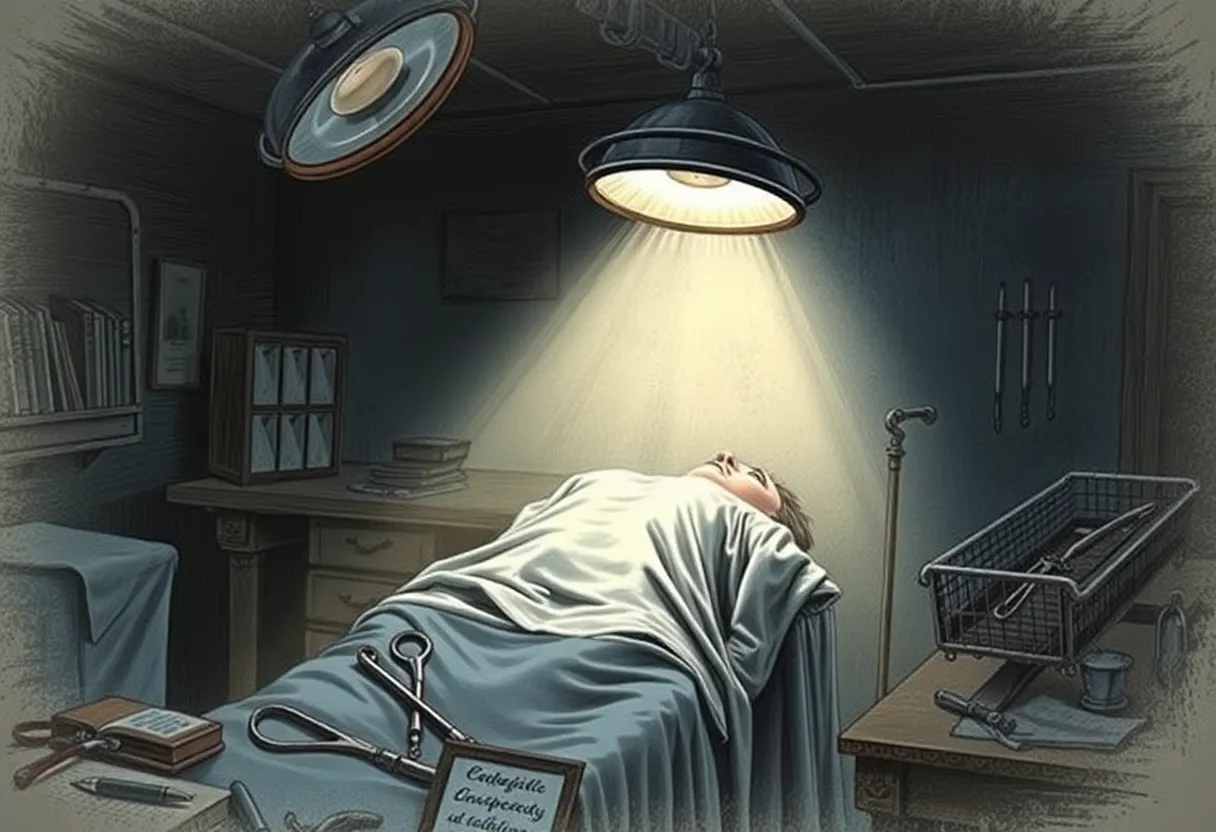News Summary
Frances Burney, a notable English novelist, faced a life-changing diagnosis of breast cancer without the benefit of anesthesia. In a horrifying surgery that included being blindfolded and restrained, she endured immense pain but survived for 29 more years. This ordeal highlights the historical challenges of surgical practices prior to the advent of modern anesthesia, illustrating the drastic evolution in pain management and patient care in medicine.
LONDON
In 1811, renowned English novelist Frances Burney faced a life-altering diagnosis: breast cancer. At the age of 59, her doctors in France recommended a mastectomy as the only means to save her life. This surgical option, however, came without the benefit of any form of anesthesia, as the medical community would not identify effective pain relief methods for another 50 years.
Confronted with the horrifying prospect of undergoing surgery while fully conscious, Burney experienced overwhelming dread in the days leading up to the procedure. On the day of the surgery, she was subjected to further measures to facilitate the operation; Burney was blindfolded and restrained by multiple assistants to prevent any movement during the operation.
During the procedure, she endured intense physical suffering, losing consciousness twice due to the severity of the pain inflicted by the surgical incision. Despite this harrowing experience, the surgery proved successful, leading to her survival for an additional 29 years. Burney’s writings provide detailed accounts of the unbearable pain she experienced, illustrating the significant challenges faced by patients undergoing surgery in that era.
The Timeline of Anesthesia Development
The stark reality of operating without anesthesia characterized much of medical history prior to the mid-19th century. Medical historians have marked October 16, 1846, as a crucial turning point in surgical practices with the first successful use of ether as an anesthetic by American doctors. Before this innovation, surgical procedures were performed without pain relief, with only life-threatening situations justifying the need for operations.
Historical Methods of Pain Relief
Despite the absence of modern anesthesia, ancient civilizations had developed various methods for pain relief. Techniques employed included opium, herbal mixtures, and even psychosomatic practices such as hypnosis. The Persian physician Ibn Sina documented a practice involving a herbal preparation known as the “soporific sponge,” which purportedly enabled a state of insensitivity to pain.
In addition, trepanation, the practice of drilling holes in the skull to treat head injuries, was common among ancient cultures, including those in Peru. Surgeons in the early 19th century, familiar with the need for speed and efficiency due to the absence of analgesics, often performed amputations in as little as 25 seconds to minimize the duration of pain exposure.
The Surgeons and Their Techniques
Notable surgical figures, such as Robert Liston, gained acclaim for their rapid techniques. However, these quick procedures sometimes resulted in accidental injuries; one of Liston’s operations led to the unintentional amputation of an assistant’s fingers, which subsequently caused infections and fatalities.
Evolution of Surgical Perceptions
Prior to the introduction of effective anesthesia, the surgical landscape was marked by fear and a high mortality rate associated with operations. The emergence of alternative methods like hypnosis, termed mesmerism, was also attempted but ultimately superseded by the acceptance of ether as a viable anesthetic. The introduction of anesthesia not only transformed surgical procedures but also significantly altered public perception towards medical practices and physician credibility.
Frances Burney’s experience exemplifies the historical struggle against pain in medical procedures, highlighting the need for advancements in surgery and pain management. Her ordeal serves as a stark reminder of the evolution of surgical practices and the impact these developments would eventually have on patient care in the medical field.
Deeper Dive: News & Info About This Topic
HERE Resources
Additional Resources
- Baptist Press: Scopes Trial – A Defining Moment in U.S. History
- Wikipedia: Medical History
- KTVU: Video Report
- Google Search: Medical Advancements
- Billy Penn: Young People’s Continental Congress Philly 2025
- Google Scholar: Anesthesia History
- Vox: Disney’s America – A U.S. History Theme Park that Failed
- Encyclopedia Britannica: Anesthesia
- Washington Post: Largest U.S. Health Care Fraud Bust
- Google News: History of Surgery
Author: STAFF HERE BALTIMORE WRITER
The BALTIMORE STAFF WRITER represents the experienced team at HEREBaltimore.com, your go-to source for actionable local news and information in Baltimore, Baltimore County, and beyond. Specializing in "news you can use," we cover essential topics like product reviews for personal and business needs, local business directories, politics, real estate trends, neighborhood insights, and state news affecting the area—with deep expertise drawn from years of dedicated reporting and strong community input, including local press releases and business updates. We deliver top reporting on high-value events such as the Baltimore Book Festival, Preakness Stakes, and Artscape. Our coverage extends to key organizations like the Baltimore Chamber of Commerce and Visit Baltimore, plus leading businesses in shipping and healthcare that power the local economy such as the Port of Baltimore and Johns Hopkins Medicine. As part of the broader HERE network, we provide comprehensive, credible insights into Maryland's dynamic landscape.





